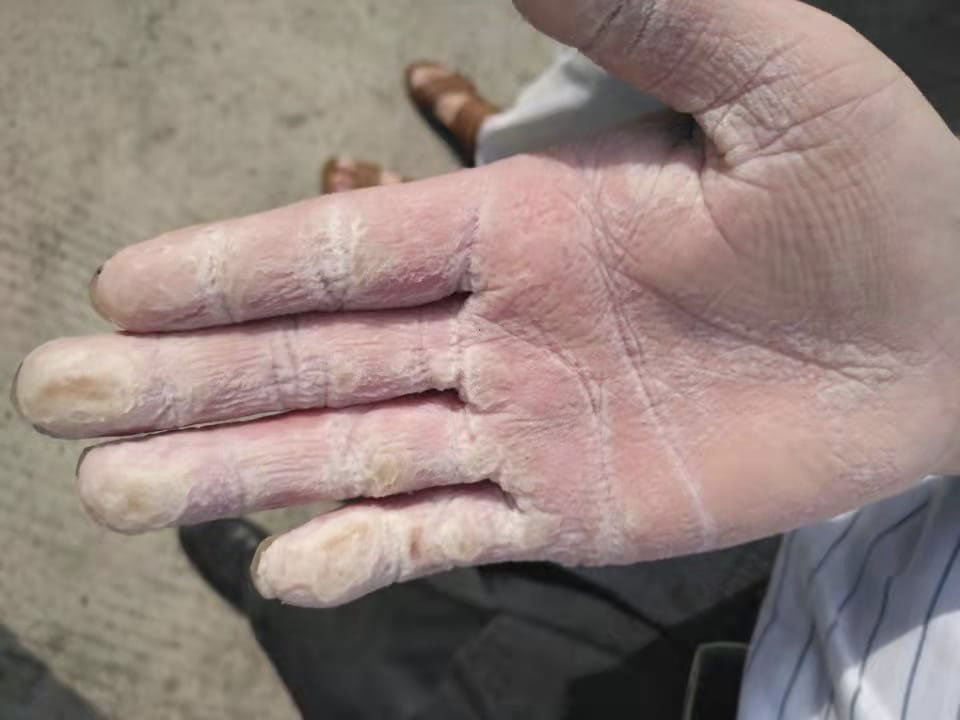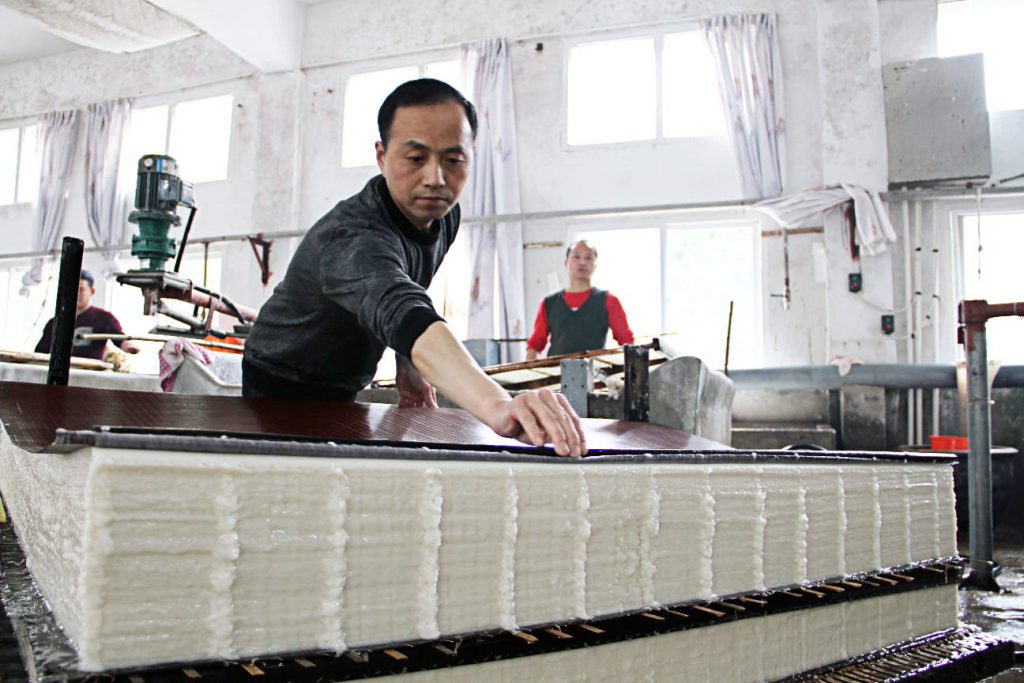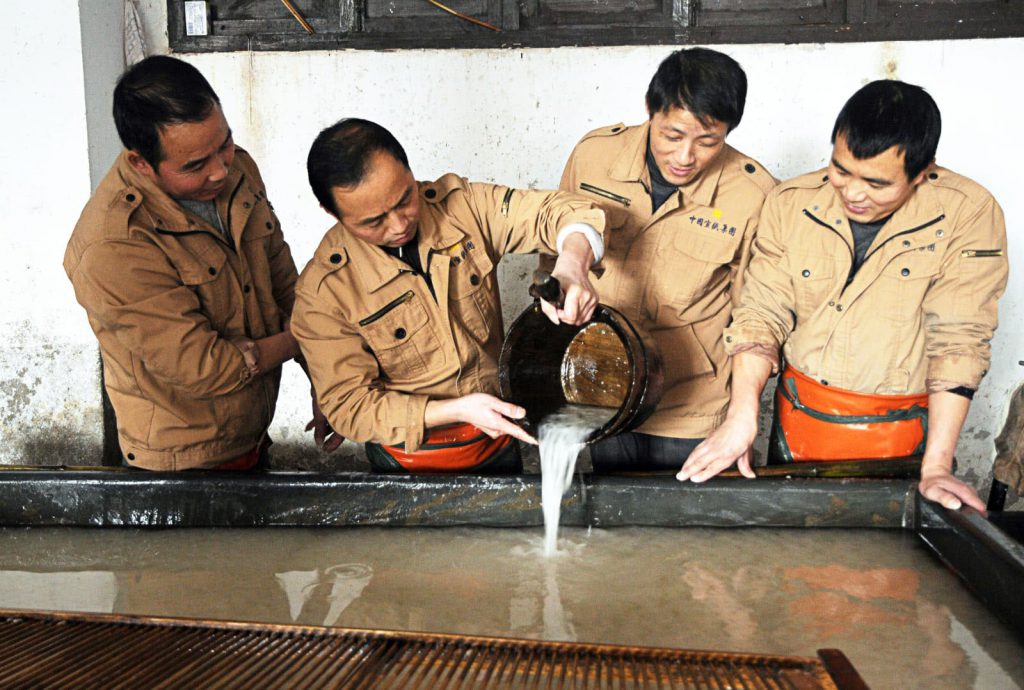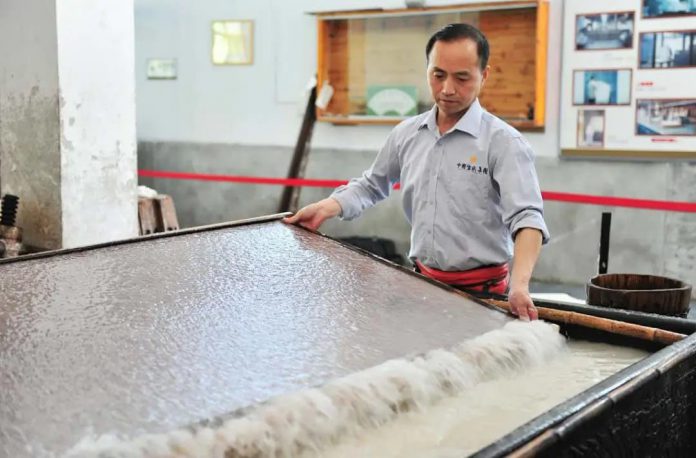A craftsman devotes his lifetime to traditional Chinese paper making.
By Emma Wei
Paper master Zhou Donghong wakes up at 4 a.m. and works for 10 hours a day in a factory. His work routine has lasted for 39 years.
The 57-year-old craftsman gets up early to finish the cleaning and start scooping paper. He finishes work at 6 p.m. He has to make nearly 200 sheets of paper a day, and the size of each is 248cm in length and 129cm in width.
“My job is to soak the paper pulp in a paper-shoveling pool, and then use bamboo nets to make paper,” he says.
Paper pulp is made after a certain proportion of tree bark and rice straw are evenly mixed.
“My hands were seriously injured because they have been soaked in water for too long. In July and August, the weather is hot and the water temperature rises, which makes my skin go bad. In winter, the temperature drops, which makes me suffer from frostbite,” Zhou says.

“My arms and shoulders were also injured. Each piece of paper is large and heavy. I now make less paper, but I will not stop because this is my passion,” he adds.
The paper he makes every day can be traced back to the Tang Dynasty with a history of more than 1,500 years.
Jingxian, in Anhui Province, where Zhou was born and works, is the birthplace of Xuan paper, or rice paper.
“My family was very poor. I had to stop school when I was eight. I had to make money to support my family. My first job was papermaking,” he says.
Zhou started learning papermaking when he was 18 with master Shi Jiemin, who has 50 years of experience in traditional craftsmanship.

“At first, I worked as a helper in the factory, hence I did not really have the chance to make paper,” he recalls.
“My master taught me seven main steps of making paper, which are: mixing pulp, scooping paper, pressing, baking, selecting, paper cutting and packaging,” he says.
“I thought it was simple and cool at first. I was able to produce good quality paper after working for five years. I was 23,” he adds.
The skill, which took Zhou 10 years to achieve perfection, was hard earned.
“When I first started, every piece of paper I made was torn. The thickness of the paper was never right. None of the paper I made was up to standard,” he recalls.
Zhou worries that traditional craftsmanship might become history.
“Young people are not interested in learning the skill. They work with computers rather than pens and paper. The paper I make is only used for Chinese calligraphy and painting, so the demand keeps falling,” he says.

Zhou recalls many workers were sacked and forced to be laid off during the epidemic, and their factory operation was suspended for about two years.
“I hope more people can learn this traditional craft. I hope I can pass the torch to the younger generation keeping this craftsmanship alive,” he says.
“I believe that more young people will come and join me. I will work harder,” he adds.
Edited by Molisa Meng
Sub-edited by Enya So







































